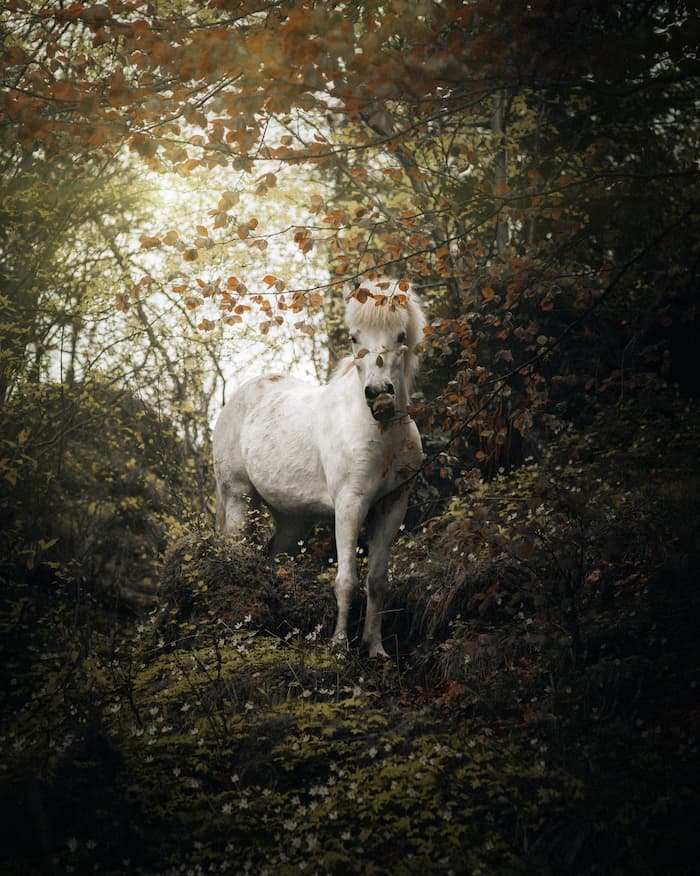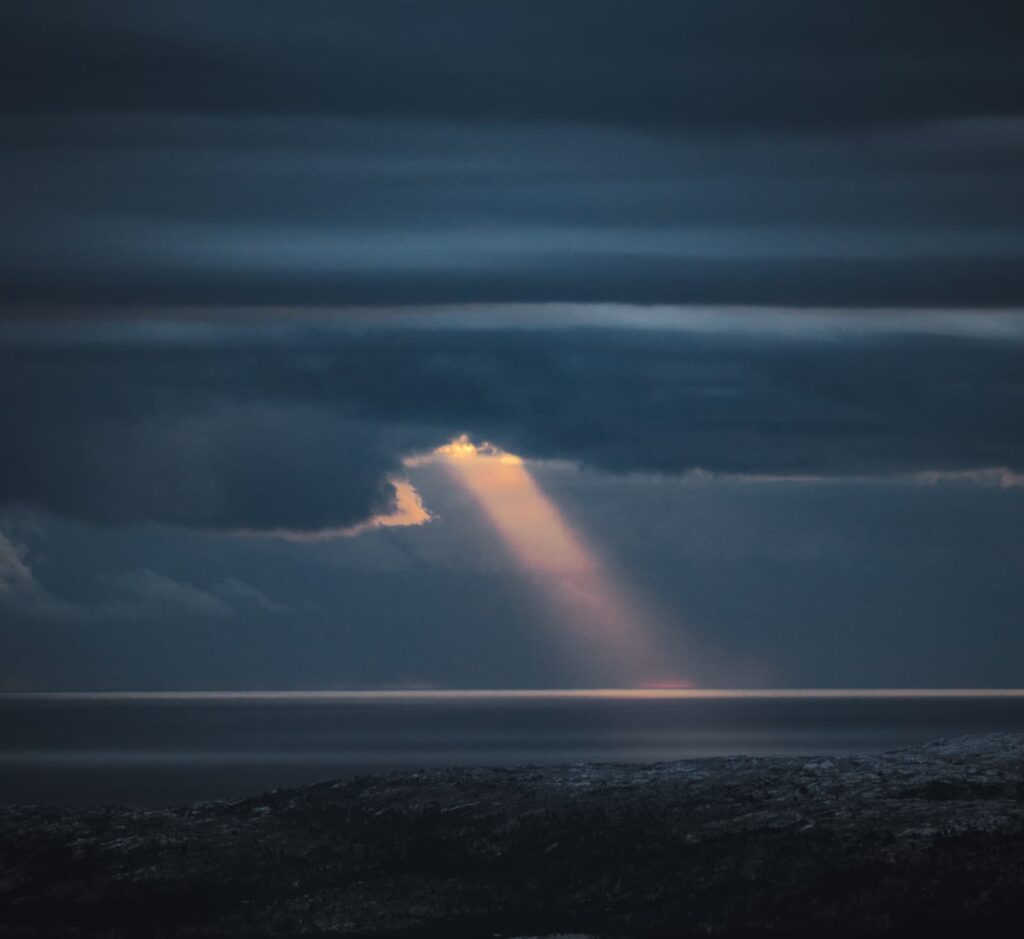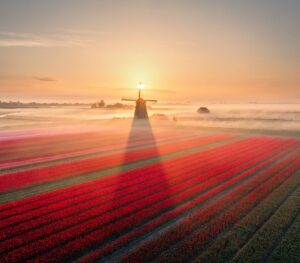
Photo tour in Azores, Portugal
Join us in the Azores for a unique photo tour, where you’ll elevate your creative skills with expert guidance from Ronald Soethje, Bruno Ázera, and Nomadict.
Dovydas is a Lithuanian photographer who settled in Norway in 2012. The stunning landscapes and sceneries of Norway inspired Dovydas and his wife to take up photography, with waterfalls being a particular interest. Dovydas believes that failures teach more than his successes, and in his story, he shares various other lessons that helped him grow.
While I grew up in beautiful Lithuania, currently, I reside in Norway with my wife. I can still not put into words how stunning it is here. The first time I saw its breathtaking sceneries of mountains and landscapes was in 2009 when we embarked on a 2500 km road trip with our family to visit friends on the Lofoten islands. At that time, we were already fond of taking photos, and our collection of memories from that trip is extensive. However, these are just personal memories and do not compare to the quality of photos we capture today. My wife first sparked our passion for photography after she purchased a camera and began experimenting with it. She is also a very dedicated photographer, and we often go on photography expeditions together. In 2012, fate brought us from Lithuania to Norway to settle down, much further south than the Lofoten.
I have always been drawn to the beauty of waterfalls, and in Norway, there are plenty of them that are all equally stunning. I can still vividly remember the first time I saw a waterfall and was completely mesmerized by its enchanting beauty. In May 2021, my wife and I visited the Skjervsfossen waterfall and captured a breathtaking view of it, with my wife in the frame. When I first looked at the few photos I had just taken, I immediately realized they were my all-time favorites. The total height of the Skjervsfossen waterfall is around 150 meters (492 feet), making it one of the most spectacular waterfalls in the region.
Skjervsfossen waterfall is located in Hordaland County, western Norway, near the villages of Skjervet and Skjerve. The waterfall is part of the Skjerve River, which originates from the Hardangervidda plateau and flows into the Granvinsfjorden. The waterfall has twin falls, which are fed by two separate streams that merge at the top before cascading down the rocky cliffs. The water flows down the falls with great force, creating a roaring sound and a misty spray that can be seen from a distance.
The area around the waterfall has hiking trails, stairs, and viewpoints, and if you’re feeling adventurous, you can walk all the way to the foot of the waterfall for a refreshing shower. In another photo of the same waterfall, you can see me standing in the frame, and I’ve titled it “shower time.” That was our second visit, and we returned to shoot some videos for an Instagram reel. It was a rainy day, and I was soaked through before I even reached the waterfall. But experiencing the full force of the falling water as I stood under the falls was an incredible experience.
It is nice to know that the Skjervsfossen waterfall is not only a popular tourist attraction but also an important source of hydroelectric power for the surrounding region. The waterfall is part of a larger hydroelectric power plant that generates electricity for the local communities! It’s beautiful to see how we can use the power of nature to live more sustainably.
Throughout the past 10 years, Norway has been both my home and a source of inspiration for my photography. Besides waterfalls, there are so many stunning locations in Norway, and the country is quite large. I doubt I could see them all in my lifetime, but my love for exploring new places always keeps me searching. Nevertheless, my partner and I have a few “secret places” that we like to visit often, where we can enjoy peace and solitude without any tourists around.
One of the most memorable places we’ve visited is still the Lofoten islands. Back then, I was not as experienced as a photographer, so I’d love to visit the islands once more and capture their beauty in a whole new way. The same goes for Lithuania, my home country. There is one photo that is particularly close to my heart; my native land and relatives come to mind every time I look at it. At the same time, there are many places I’d like to visit with the new skills and gear that we gathered over the years.
I love seeing my photographs improve, but it is very special that, even when looking back at old photo albums, visuals come to mind, and emotions are evoked. Memories fade over time but photographs have the power to bring you back and help you remember events and reexperience feelings that would otherwise have been forgotten, blurred, or inaccurate. It’s that feeling that continues to push me forward with my photography and has had a profound impact on my work.
A few lessons I’ve learned to continuously improve and get satisfying results would be:
The failures we experience teach us more than the successes we achieve. Being bad at something is the first step toward becoming good at something as you grow into photography.
A photographer’s preparation is their insurance policy against any kind of luck. You may get a chance to capture an unexpected photographic moment or discover great lighting suddenly.

Whether we’re learning or practicing, we enjoy the experience as we get better.
This is the key to photography. After you have packed away your gear, the most impressive scene can unfold.

As a result of the last point, and a long day of trying and waiting, I was finally able to capture an image of a puffin we were on Runde island, Norway.
It was the summer of 2022, and after wanting to visit this place for a long time we finally made it. Runde Island is really unique, and the gorgeous puffins are so attractive to photographers and tourists. We were very lucky with the weather that day as it was incredibly sunny while it had rained the previous weeks, and months! The experience of seeing puffins and photographing them made this experience remarkable. They`re fascinating creatures. Taking photographs of the puffins was quite challenging. They`re really fast; one moment they are standing in a cave, and before you are able to take a shot, they are standing in another spot. That moment I realized I had to be even quicker to capture them at the moment, be better prepared, anticipate, observe, and analyze their behavior to be able to predict as much as possible… That day taught me a lot. Patience was also one of the most important factors that day. After some hours of waiting, the puffins finally settled down in their nests. At that moment we took plenty of beautiful shots, one after another.
According to me, the key components for capturing a great landscape photo include the crucial element of lighting, which even beginner photographers recognize as vital. Composition, another essential ingredient, allows you to convey emotions and tell a story through the photo. Then, the depth of field, which is determined by the objects in the foreground, middle, and background, and mastering aperture control is crucial for achieving the desired effect. Finally, post-processing is an essential component of great photos, as it allows you to eliminate mistakes and enhance the overall quality of the image, just like editing a book before publishing.
My approach to photo editing varies depending on my mood, with some photos requiring minimal adjustments and others requiring more extensive editing. The final outcome is also influenced by the image I have in mind, which plays a significant role in the editing process. To give myself more options, I often take the same photo with different exposures to make adjustments later on.
If you want to improve your photo editing skills, I would recommend having a rough idea of how you want the final image to look. Consider the message, story, or feeling you want to convey to your audience, and try to visualize the details as clearly as possible.
Before delving into photo editing, it’s important to know how to read the histogram. In photography, a histogram is a graphical representation of the distribution of tones in an image. The horizontal axis of the histogram represents the tonal range, from the darkest tones on the left to the brightest ones on the right. The vertical axis represents the number of pixels at each tonal value.
Understanding the histogram is significant because it can help you evaluate the exposure of your image and make adjustments accordingly. For example, if the histogram shows that the majority of the pixels are bunched up on the right-hand side, it means that the image is overexposed and you may need to adjust the exposure settings to reduce the brightness of the image. On the other hand, if the histogram shows that the majority of the pixels are bunched up on the left-hand side, it means that the image is underexposed, and you may need to increase the exposure to brighten the image.
Move RIGHT or LEFT to compare
By using the histogram, you can also adjust the contrast and brightness of your image more accurately, as well as adjust the exposure compensation or flash power when taking photos in difficult lighting conditions.
Overall, understanding the histogram is important for ensuring that your images are well-exposed and have the desired tonal range, which can make a significant difference in the quality of your photographs. So, apart from the metadata, a histogram gives you the most useful information you’ll ever need to know about your image.
Although I mainly do photography because it gives me joy, I do try to always learn and improve the quality of my work, and I do have dreams. Maybe one day I can talk about those dreams a little more. However, in general, I don’t usually wonder what I’ll be like or how my life will be several years from now. I do know that I desire the fundamental things in life: love, family, happiness, and the ability to pursue my dreams. Exploring new places and traveling is something that brings me immense joy, and I anticipate continuing my journey as a creative photographer and improving my skills as a creator. To me, having a broader vision and being open to all surprises that you may encounter is all that counts.

Join us in the Azores for a unique photo tour, where you’ll elevate your creative skills with expert guidance from Ronald Soethje, Bruno Ázera, and Nomadict.

In this article, Forest shares how years of chasing scale, silence, and raw landscapes shaped his approach to photography, from the deserts of Kazakhstan to the volcanic ridges of Iceland. He talks about how he uses light, texture, and vast negative space to create images that feel both intimate and overwhelming.

Simon shares the journey behind his photography, from early inspirations to field techniques, editing, and the story of the winning shot that shaped his path.

In this article, Miro shares how his love for cinematic music evolved into a deep passion for photography and how he uses light, color, and atmosphere to turn the streets of Prague into living film scenes.

In this article, Stefanie reveals how her background in physics sparked her passion for astrophotography and how she blends science with creativity to capture the beauty of the night sky. Readers will discover her approach to color, contrast, and editing, as well as her aurora photography workflow.

Spanish photographer Yhabril captures the profound connection between humans and the mountains that shaped him. Growing up in the Pyrenees, his work bridges outdoor sports, landscapes, and celestial scenes — often blending athletes, moonlight, and wilderness into striking visual stories.

In this article, Ariane shares how photography helped her navigate personal challenges, connect authentically with people and animals, and develop a philosophy rooted in empathy and artistic freedom. Readers will also discover her ethical approach to wildlife photography and her trusted equipment for both camouflage techniques and cameras.

Discover how to photograph Dutch tulip fields in their most magical light. From choosing the right gear and lenses to mastering composition, color, and aerial perspectives, this guide shares creative techniques to capture the beauty of the Netherlands’ tulips. Learn how light, color grading, and proportion bring emotion into every frame.
